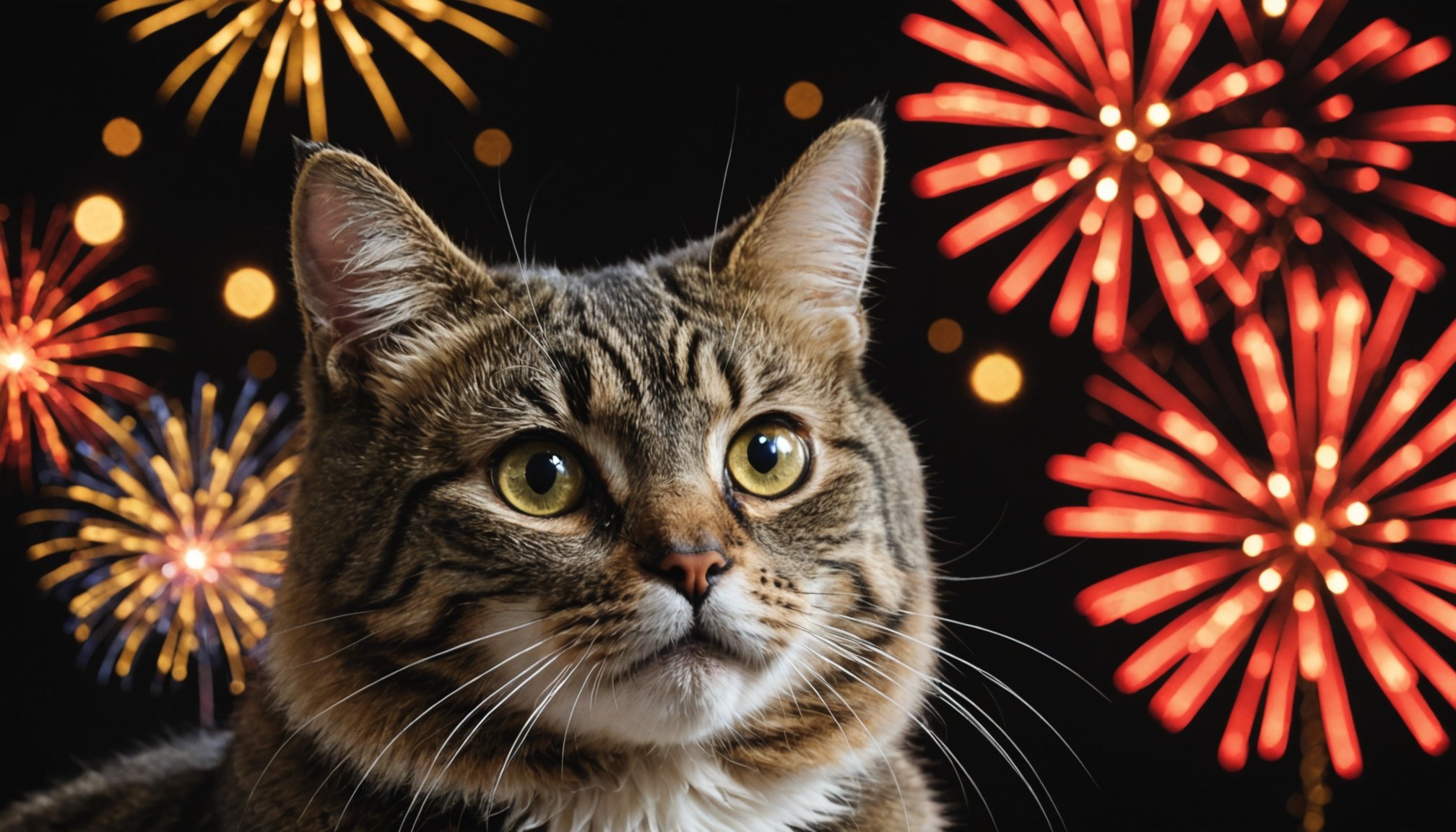Understanding Feline Anxiety
Recognizing feline anxiety is crucial for every cat owner. Cats can experience anxiety due to various stress triggers, including loud noises such as fireworks and thunderstorms. When faced with such disturbances, cats may exhibit signs of anxiety like increased vocalization, seeking refuge by hiding, or showing unexpected aggression. Additionally, such stress can trigger changes in cat behavior, potentially escalating health issues if left unaddressed.
Untreated anxiety can have severe impacts on both the health and behavior of a cat. Stress hormones released during anxious episodes can lead to physical ailments, including loss of appetite, digestive issues, and excessive grooming. Behaviorally, it can result in destructive habits, such as scratching furniture or urinating outside the litter box. Recognizing and addressing these signs early is essential in preventing long-term health problems and maintaining a harmonious home environment.
This might interest you : Smart approaches to manage your cat”s diet and combat feline obesity
Understanding these fundamental aspects of feline anxiety equips pet owners with the knowledge needed to address and alleviate these challenges. Cats depend on their human companions to comprehend these distress signals and environment-related stressors, fostering an atmosphere where they can thrive emotionally and physically. By effectively managing anxiety, owners can improve a cat’s quality of life significantly.
Proven Techniques for Managing Cat Anxiety
Finding effective anxiety management strategies can significantly enhance your cat’s well-being. Let’s explore some valuable techniques.
Also read : Top strategies for a smooth and stress-free vet experience for your feline friend
Desensitization Strategies
Desensitization involves gradually exposing cats to potential stressors, like loud noises. A practical approach is to use recordings of fireworks or thunderstorms. Start with a low volume, rewarding your cat with positive reinforcement during calm reactions. Over time, increase the volume to build tolerance without inducing fear. This practice can condition your cat’s response to real-life scenarios, reducing anxiety.
Creating Safe Spaces
A safe environment is crucial for cats during stressful events. Providing a space with comfortable bedding and quiet areas helps them feel secure. Ensure there are hiding spots and vertical spaces—such as shelves or cat trees—for additional security. These elements contribute to a calming environment where your cat can manage stress more effectively.
Utilizing Calming Products
Calming products, including specialized collars and pheromones, offer measurable benefits. Anxiety wraps apply gentle pressure, akin to swaddling, which can soothe anxious cats. Calming sprays, treats, and supplements complement these products by aiding relaxation. When used consistently, these products can create a tranquil atmosphere, easing anxiety.
Expert Tips and Resources
When dealing with feline anxiety, having access to expert advice is invaluable. Veterinarians and feline behaviorists provide critical insights into anxiety management. They often suggest tailored strategies to address individual cat needs. Engaging with these professionals ensures that advice is grounded in scientific methods and best practices.
Personal anecdotes from cat owners who have navigated their pets’ anxiety can also be enlightening. Real-world stories provide relatable solutions that have worked for others in similar situations. By drawing from these experiences, you can find practical tips that complement professional advice.
For those interested in deepening their understanding, there are numerous cat care resources available. Many books and online articles discuss advanced strategies and tips for managing feline anxiety. Additionally, videos and tutorials can visually guide you through complex techniques, making the implementation process more straightforward.
Consider exploring further readings that renowned veterinarians or cat behaviorists often recommend. These resources offer in-depth explanations and can boost your confidence in handling anxiety issues. By combining expert advice, community experiences, and educational resources, you can more effectively address and manage your cat’s anxiety, ultimately promoting a healthier and happier environment for both of you.
Implementation of Anxiety Relief Techniques
Alleviating feline anxiety requires strategic implementation tailored to each cat’s needs. This involves actionable steps and smart environmental adjustments.
Step-by-Step Guide to Implementation
Taking progressive actions can make anxiety management more effective. Start by compiling a checklist of essential supplies, such as anxiety wraps, pheromone sprays, and engaging toys. Distribute these alongside cozy bedding in safe zones. Introduce desensitization gradually: allocate specific time daily to expose your cat to controlled stress environments like recorded thunderstorms. Maintain a consistent timeline to ensure your cat adjusts comfortably. Equally important is observing your cat’s behavior—note reactions and modify interventions accordingly.
Recommended Environmental Adjustments
Creating an anxiety-free zone requires conscious changes. Consider soundproofing rooms to buffer loud noises, particularly during fireworks or thunderstorms. Lower lighting helps create a soothing ambiance, and keeping the environment calm minimizes disturbance. As a pet owner, projecting a calm demeanor can profoundly influence your cat, reinforcing their sense of security.
Links to Studies and Additional Resources
For comprehensive support, explore research that validates anxiety management techniques. Seek reputable resources, like well-known pet care organizations, offering in-depth guidance. Local veterinary behaviorists can provide personalized advice, ensuring your strategies align with professional recommendations. Implementing these carefully structured methods promises a more relaxed environment, aiding happier coexistence with your feline friend.











